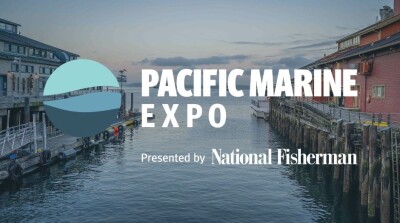By Andrew Minkiewicz and Anne Hawkins
Last week, the lawyers at the Conservation Law Foundation used a posting on their Talking Fish blog (“Industry Lawyers Wrong on Closed Areas Science: An Open and Shut Case,” Feb. 18, 2014) to attack our Washington Lookout column (“Wishing doesn't make it so,” National Fisherman, March 2014, p. 8). They accused us of “sending the council… misinformation regarding the science in an attempt to weaken the habitat plan.” In line with previous Talking Fish articles, the CLF lawyers provided little insight into the issues at hand when they attacked the position of the Fisheries Survival Fund on the Georges Bank area closures.
The reality remains: The peer-reviewed scientific recommendations developed over 10 years by New England fishery stock assessment scientists and habitat experts agree that the current closures are not meeting the goals that the New England Fishery Management Council has set for groundfish habitat protection.
CLF claims to stand with science but continues to misrepresent the facts guiding important processes to update fisheries management according to comprehensive scientific evaluations.
- A huge majority of the areas under review were never closed to protect habitat — they were restricted 20 years ago to prevent fish mortality under a system of management that is no longer in use. In 2010, most groundfish stocks in New England switched to a catch-shares system that limits mortality by capping the number of fish that can be landed.
- Changes to these closures are part of an overdue process to incorporate the most up-to-date science in order to enable better, more effective fisheries management.
- There is no evidence that the massive year-round Georges Bank closure has helped the recovery of vulnerable groundfish populations like cod and yellowtail flounder.
- Under the catch-shares system, the current closures are counterproductive to the council’s habitat goals. These large closed areas increase fishing pressure on unrestricted New England habitats by displacing fishing from high-yield areas. This ultimately increases contact between fishing gear and ocean habitat. The council’s Habitat Committee stated in an analysis: “We find that for nearly all area and gear type combinations, opening existing closed areas to fishing is predicted to decrease aggregate adverse effects.”
- Areas that have been identified by current models as important habitat for groundfish stocks and spawning behavior will remain restricted. This includes the unique kelp habitat in the Gulf of Maine closure as well as the Whaleback area, which is the only closure that has been identified by the council as containing a cod spawning site.
On Tuesday, Feb. 25, the council will meet to determine preferred alternatives to the current closures.
The research cited by CLF does not support the organization’s recommendation to maintain the status quo.
- The 2005 study by Murawski et al. that is highlighted in the Talking Fish article concludes, “These findings emphasize that year-round closures did not have universal positive impacts on the abundance and spill-over potential of all groundfish stocks.”
- The referenced 2012 study by Dean et al. looks at the behavior of six tagged codfish in association with gillnets, though gillnet gear is currently allowed in many areas of the current closures.
- CLF conflates unique habitat in the Gulf of Maine closure with the closures in Georges Bank. These habitats have various area-specific features, and the council has recognized the importance of analyzing each closure separately.
When the current closed areas were designated over 20 years ago, scant information was available to determine where important fish habitat was located. Today, with the help and support of the scallop industry, scientists are working with a peer-reviewed Swept Area Seabed Impact model to both locate areas that are vital to groundfish spawning and stock health, and offer solutions that minimize potential adverse impacts from fishing.
In the council’s SASI analysis, large portions of the current closures were not identified as meriting protection. The models also indicate that many areas previously considered Essential Fish Habitat are not ideally located for habitat protection. Adjusting the present closures according to up-to-date and comprehensive analyses will best protect important fish habitat while eliminating the unnecessary and ecologically harmful restrictions that are currently in place.






